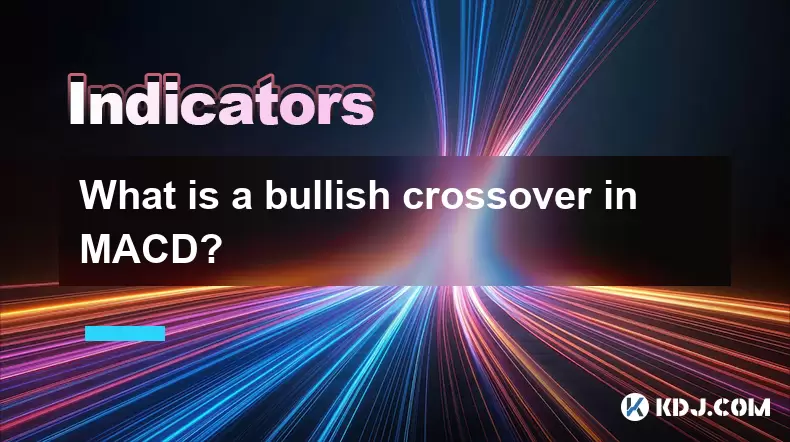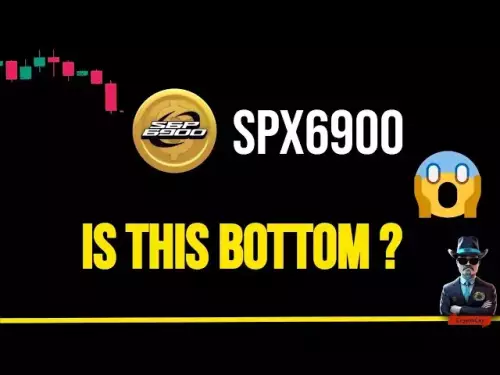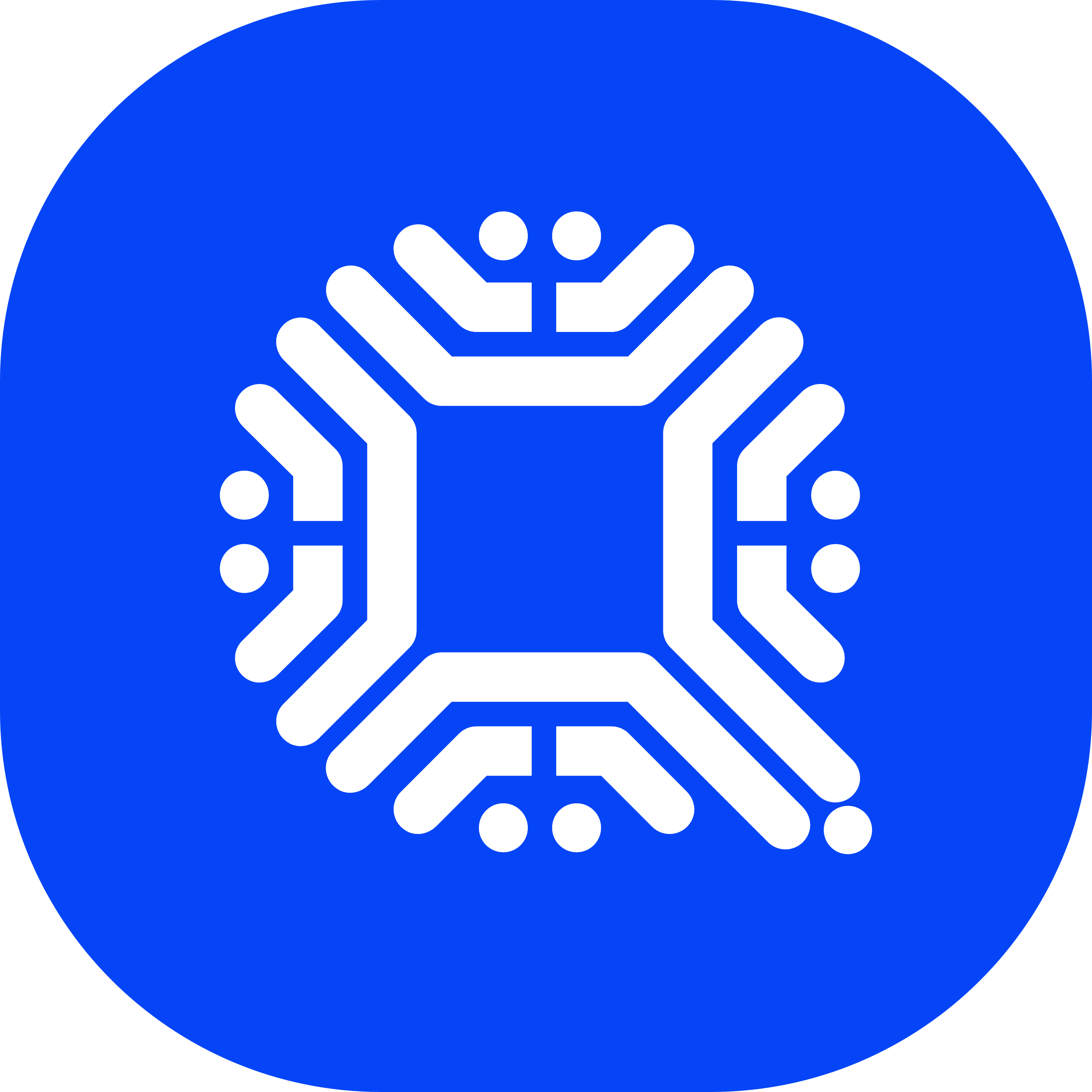-
 Bitcoin
Bitcoin $113100
-1.74% -
 Ethereum
Ethereum $4800
1.16% -
 XRP
XRP $3.041
0.36% -
 Tether USDt
Tether USDt $0.9999
0.02% -
 BNB
BNB $876.6
-0.40% -
 Solana
Solana $205.1
0.96% -
 USDC
USDC $0.0000
0.00% -
 Dogecoin
Dogecoin $0.2345
-0.10% -
 TRON
TRON $0.3629
0.40% -
 Cardano
Cardano $0.9260
1.91% -
 Chainlink
Chainlink $26.20
0.28% -
 Hyperliquid
Hyperliquid $46.04
2.89% -
 Sui
Sui $3.722
0.22% -
 Stellar
Stellar $0.4113
-0.53% -
 Ethena USDe
Ethena USDe $1.000
0.03% -
 Bitcoin Cash
Bitcoin Cash $590.3
0.39% -
 Avalanche
Avalanche $25.82
-0.01% -
 Hedera
Hedera $0.2504
-0.92% -
 Litecoin
Litecoin $119.1
-1.33% -
 UNUS SED LEO
UNUS SED LEO $9.598
0.03% -
 Toncoin
Toncoin $3.315
-1.69% -
 Shiba Inu
Shiba Inu $0.00001308
-1.02% -
 Uniswap
Uniswap $11.06
-2.10% -
 Polkadot
Polkadot $4.149
-1.10% -
 Dai
Dai $1.000
0.03% -
 Aave
Aave $350.7
-1.07% -
 Cronos
Cronos $0.1587
0.97% -
 Bitget Token
Bitget Token $4.664
-0.71% -
 Monero
Monero $274.5
3.42% -
 Ethena
Ethena $0.7021
-4.70%
What is a bullish crossover in MACD?
A bullish MACD crossover occurs when the MACD line crosses above the signal line, signaling rising bullish momentum and a potential uptrend in crypto prices.
Aug 10, 2025 at 07:43 am

Understanding the MACD Indicator
The Moving Average Convergence Divergence (MACD) is a widely used technical analysis tool in the cryptocurrency market that helps traders identify potential trend reversals, momentum shifts, and entry or exit points. The MACD consists of three main components: the MACD line, the signal line, and the histogram. The MACD line is calculated by subtracting the 26-period Exponential Moving Average (EMA) from the 12-period EMA. The signal line is typically a 9-period EMA of the MACD line. The histogram represents the difference between the MACD line and the signal line, visually indicating the strength and direction of momentum.
Traders rely on the MACD because it combines elements of both trend-following and momentum indicators. In the volatile world of cryptocurrency trading, where price swings can be rapid and extreme, the MACD helps filter out noise and highlight meaningful shifts in market sentiment. When the MACD line crosses above or below the signal line, it generates signals that traders interpret as potential buying or selling opportunities.
What Defines a Bullish Crossover in MACD?
A bullish crossover in MACD occurs when the MACD line crosses above the signal line. This event is interpreted as a sign that upward momentum is increasing and that a potential uptrend may be beginning. The crossover is considered “bullish” because it suggests that the shorter-term momentum (represented by the 12-period EMA) is gaining strength relative to the longer-term momentum (26-period EMA), and that buyers are starting to take control.
The visual representation of this crossover is critical. On a chart, when the MACD line (faster line) moves upward and intersects the signal line (slower line) from below, the crossover forms. This is often accompanied by an expansion in the histogram bars above the zero line, indicating growing positive momentum. Traders watch for this pattern closely, especially when it occurs after a period of downtrend or consolidation, as it may signal the start of a new bullish phase.
How to Identify a Bullish Crossover on a Crypto Chart
To identify a bullish crossover on a cryptocurrency chart, follow these steps:
- Open your preferred cryptocurrency trading platform (e.g., Binance, TradingView, or Coinbase Pro).
- Select the asset you wish to analyze (e.g., BTC/USDT, ETH/USD).
- Apply the MACD indicator from the platform’s technical analysis tools.
- Observe the two lines in the MACD sub-window below the price chart: the solid MACD line and the dotted signal line.
- Look for instances where the MACD line crosses above the signal line.
- Confirm the crossover occurs below or near the zero line for stronger validity.
- Check the histogram: it should transition from negative (red bars) to positive (green bars) as the crossover happens.
It is essential to ensure the crossover is not a false signal. This can be done by analyzing the broader price action. For example, if the crossover happens during a clear downtrend with no supporting volume or bullish candlestick patterns, the signal may lack strength. Conversely, a crossover that aligns with a breakout above a key resistance level or follows a bullish engulfing candle increases its reliability.
Strategic Use of Bullish Crossovers in Crypto Trading
In practice, traders use the bullish MACD crossover as part of a broader trading strategy. One common approach is to combine the signal with other technical indicators for confirmation. For instance:
- Use Relative Strength Index (RSI) to check if the asset is emerging from oversold conditions (RSI below 30), which supports a bullish reversal.
- Apply support and resistance levels to determine if the crossover occurs near a known support zone, increasing the probability of a bounce.
- Monitor volume spikes during the crossover to validate the strength of the move.
- Combine with moving averages, such as the 50-day or 200-day MA, to assess whether the price is positioned above a major average, reinforcing bullish sentiment.
Some traders also apply filters, such as waiting for the MACD line to remain above the signal line for two consecutive periods before entering a trade. This helps avoid whipsaws caused by short-term volatility common in cryptocurrency markets. Position sizing and stop-loss placement are equally important. A stop-loss can be placed below the recent swing low or below the signal line to manage risk effectively.
Limitations and Common Misinterpretations
While the bullish MACD crossover is a powerful signal, it is not infallible. One major limitation is lag, as the MACD is based on moving averages, which are inherently backward-looking. In fast-moving crypto markets, by the time the crossover appears, a significant portion of the price move may have already occurred.
Another issue is false signals during sideways markets. In ranging or choppy conditions, the MACD lines may cross back and forth frequently, generating multiple bullish and bearish crossovers without a sustained trend. This is known as “whipsaw” and can lead to repeated losing trades if not filtered properly.
Additionally, the standard MACD settings (12, 26, 9) may not suit all cryptocurrencies or timeframes. For example, a more volatile altcoin might benefit from adjusted settings like (8, 17, 6) to increase sensitivity. Traders should test different configurations in a demo environment before applying them to live trading.
Backtesting Bullish Crossover Strategies
To evaluate the effectiveness of a bullish MACD crossover strategy, backtesting is essential. This involves applying the strategy to historical price data to assess its performance.
- Choose a cryptocurrency pair and timeframe (e.g., 4-hour chart of BTC/USDT).
- Mark all instances where a MACD line crossed above the signal line.
- Record the price action following each crossover: Did the price rise? By how much? How long did the move last?
- Calculate win rate, average gain, and maximum drawdown.
- Adjust parameters or add filters (e.g., requiring RSI > 50) and retest.
Backtesting helps determine whether the strategy has a statistical edge and reveals how it performs under different market conditions—trending, volatile, or consolidating.
Frequently Asked Questions
Q: Can a bullish MACD crossover occur above the zero line?
Yes, a bullish crossover can occur above the zero line. While crossovers below zero are often seen as stronger reversal signals, those above zero indicate that bullish momentum is accelerating within an existing uptrend, potentially signaling a continuation.
Q: How long should I wait after a bullish crossover to enter a trade?
Some traders enter immediately upon confirmation of the crossover, while others wait for the next candle to close above the signal line to avoid false signals. The optimal timing depends on your risk tolerance and trading style.
Q: Does the bullish MACD crossover work the same across all cryptocurrencies?
No, effectiveness varies. Major coins like Bitcoin and Ethereum tend to produce more reliable signals due to higher liquidity and smoother price action. Low-cap altcoins with erratic movements may generate frequent false crossovers.
Q: Can I automate trading based on MACD bullish crossovers?
Yes, many trading bots and platforms support MACD-based strategies. You can program alerts or execute trades automatically when the MACD line crosses above the signal line, though manual oversight is recommended to prevent losses during volatile periods.
Disclaimer:info@kdj.com
The information provided is not trading advice. kdj.com does not assume any responsibility for any investments made based on the information provided in this article. Cryptocurrencies are highly volatile and it is highly recommended that you invest with caution after thorough research!
If you believe that the content used on this website infringes your copyright, please contact us immediately (info@kdj.com) and we will delete it promptly.
- Ripple's RLUSD and Japan's Regulation: A Match Made in Digital Finance Heaven
- 2025-08-25 07:05:29
- BlockDAG's $381M Presale: Meet the Core Team Driving Its Success
- 2025-08-25 07:25:14
- Solana Price Targets $270: On-Chain Strength Fuels Bullish Momentum
- 2025-08-25 07:25:14
- ETH Market Dominance Soars to 14.65%: Ethereum's Highest Point in 2025!
- 2025-08-25 07:50:12
- XRP Enters Top 100: A New Era for the Digital Asset?
- 2025-08-25 07:50:12
- Optimism's Breakout: A Strategic Entry Point for Savvy Investors
- 2025-08-25 08:05:26
Related knowledge

What does it mean when the +DI and -DI cross frequently in the DMI indicator but the ADX is flattening?
Aug 11,2025 at 03:15am
Understanding the DMI Indicator ComponentsThe Directional Movement Index (DMI) is a technical analysis tool composed of three lines: the +DI (Positive...

What does the sudden appearance of a "dark cloud cover" candlestick pattern during an uptrend indicate?
Aug 13,2025 at 11:35am
Understanding the 'Dark Cloud Cover' Candlestick PatternThe dark cloud cover is a bearish reversal pattern in technical analysis that typically appear...

What does it mean when the moving average, MACD, and RSI all send buy signals simultaneously?
Aug 11,2025 at 01:42pm
Understanding the Convergence of Technical IndicatorsWhen the moving average, MACD, and RSI all generate buy signals at the same time, traders interpr...

What does it mean when both the KDJ indicator and the RSI show overbought signals simultaneously?
Aug 13,2025 at 11:35am
Understanding the KDJ Indicator in Cryptocurrency TradingThe KDJ indicator is a momentum oscillator derived from the Stochastic Oscillator, widely use...

What does it mean when the price is trading above the SAR indicator but the red dots are densely packed?
Aug 09,2025 at 11:49pm
Understanding the SAR Indicator and Its Visual SignalsThe SAR (Parabolic Stop and Reverse) indicator is a technical analysis tool used primarily to de...

What does it mean when the candlestick chart forms a "Morning Star" but trading volume is sluggish?
Aug 12,2025 at 06:28pm
Understanding the Morning Star Candlestick PatternThe Morning Star is a three-candle bullish reversal pattern commonly observed in cryptocurrency pric...

What does it mean when the +DI and -DI cross frequently in the DMI indicator but the ADX is flattening?
Aug 11,2025 at 03:15am
Understanding the DMI Indicator ComponentsThe Directional Movement Index (DMI) is a technical analysis tool composed of three lines: the +DI (Positive...

What does the sudden appearance of a "dark cloud cover" candlestick pattern during an uptrend indicate?
Aug 13,2025 at 11:35am
Understanding the 'Dark Cloud Cover' Candlestick PatternThe dark cloud cover is a bearish reversal pattern in technical analysis that typically appear...

What does it mean when the moving average, MACD, and RSI all send buy signals simultaneously?
Aug 11,2025 at 01:42pm
Understanding the Convergence of Technical IndicatorsWhen the moving average, MACD, and RSI all generate buy signals at the same time, traders interpr...

What does it mean when both the KDJ indicator and the RSI show overbought signals simultaneously?
Aug 13,2025 at 11:35am
Understanding the KDJ Indicator in Cryptocurrency TradingThe KDJ indicator is a momentum oscillator derived from the Stochastic Oscillator, widely use...

What does it mean when the price is trading above the SAR indicator but the red dots are densely packed?
Aug 09,2025 at 11:49pm
Understanding the SAR Indicator and Its Visual SignalsThe SAR (Parabolic Stop and Reverse) indicator is a technical analysis tool used primarily to de...

What does it mean when the candlestick chart forms a "Morning Star" but trading volume is sluggish?
Aug 12,2025 at 06:28pm
Understanding the Morning Star Candlestick PatternThe Morning Star is a three-candle bullish reversal pattern commonly observed in cryptocurrency pric...
See all articles

























































































